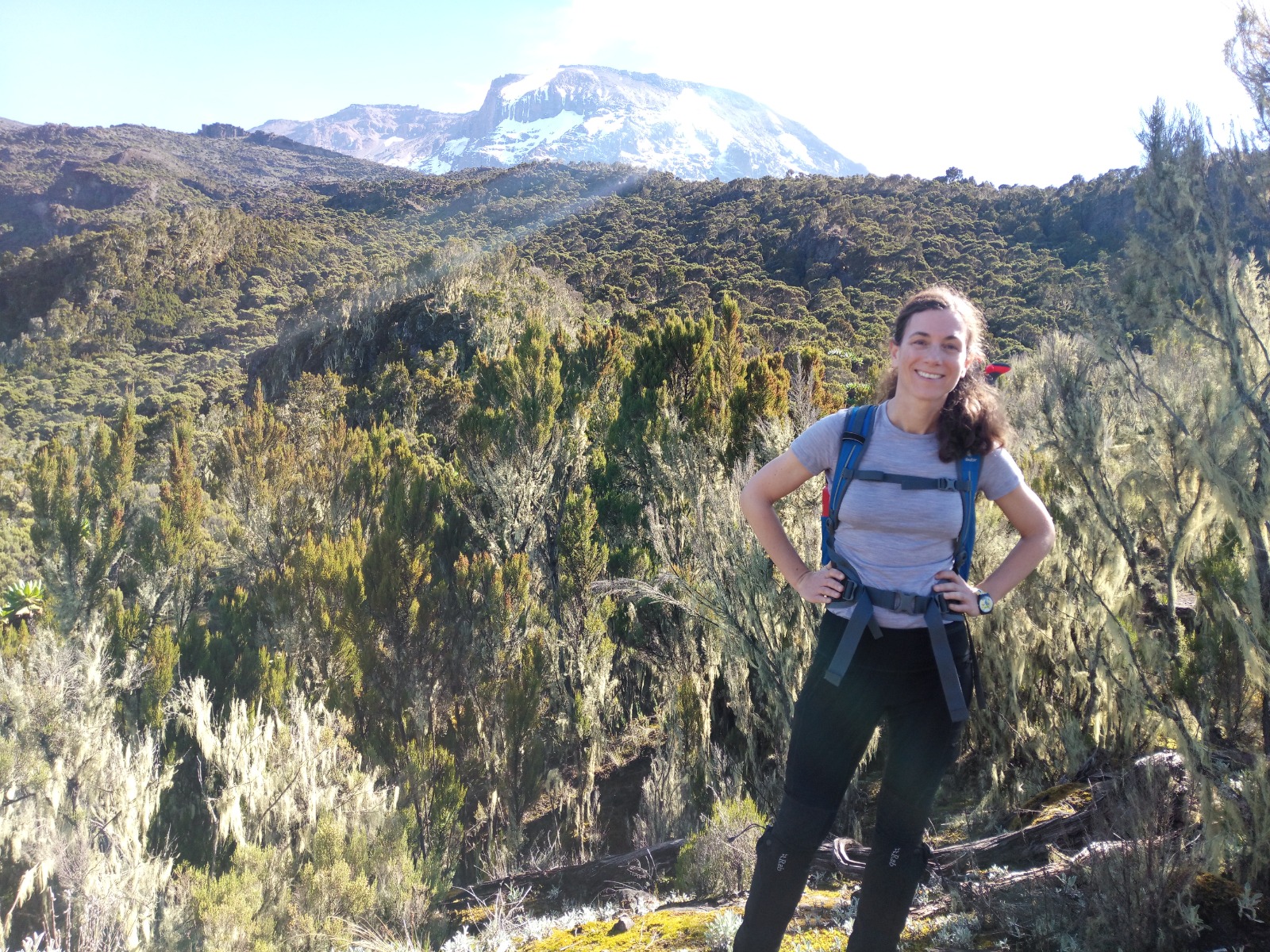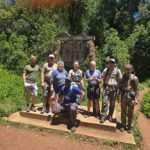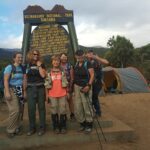Mount Kilimanjaro, known as the “Roof of Africa,” is one of the world’s most renowned mountains, drawing adventurers, nature lovers, and curious travelers from all over the globe. This guide will answer the fundamental question: Where is Mount Kilimanjaro located? Additionally, we’ll delve into what makes this iconic peak so special, how to get there, and what to expect when planning a visit.
Where Exactly Is Mount Kilimanjaro?
Mount Kilimanjaro is situated in northern Tanzania, close to the border with Kenya, in East Africa. It stands majestically within Kilimanjaro National Park, a UNESCO World Heritage Site. The mountain is the highest peak on the African continent, rising to an impressive 5,895 meters (19,341 feet) above sea level. Kilimanjaro is located just 205 miles south of the Equator, giving it a unique mix of climates and ecosystems that attract explorers from around the world.
Coordinates of Mount Kilimanjaro:
- Latitude: 3.0674° S
- Longitude: 37.3556° E
How to Get to Mount Kilimanjaro
Traveling to Kilimanjaro is relatively straightforward, with several access points and travel options to consider.
By Air:
- The primary gateway to Kilimanjaro is Kilimanjaro International Airport (JRO), located about 40 kilometers (25 miles) from Moshi, the nearest town to the mountain.
- You can also fly into Jomo Kenyatta International Airport (NBO) in Nairobi, Kenya, and take a shuttle or connecting flight to Kilimanjaro International Airport.
- Arusha Airport (ARK) is another option for domestic flights if you’re already traveling within Tanzania.
By Road:
- From Arusha, a popular tourist hub, it’s a 1.5 to 2-hour drive to the base of Kilimanjaro.
- Public buses and private transfers are available from Dar es Salaam and Nairobi, but flying is the fastest and most convenient option.
A Brief Overview of Kilimanjaro’s Geography
Mount Kilimanjaro is a dormant stratovolcano, made up of three distinct volcanic cones: Kibo, Mawenzi, and Shira. Kibo is the highest and most famous cone, housing the summit point known as Uhuru Peak.
Kilimanjaro’s unique location near the Equator allows for a stunning mix of ecosystems:
- Tropical Rainforest: The lower slopes are covered with dense, lush forests, home to monkeys, exotic birds, and unique flora.
- Moorland and Heather Zone: Ascend a little higher, and you’ll encounter grassy moorlands and giant heathers.
- Alpine Desert: Above 4,000 meters, the landscape becomes arid, rocky, and devoid of much vegetation.
- Arctic Zone: The summit area is cold, icy, and snow-covered, offering stunning glacier views.
Why Climb Mount Kilimanjaro?
Kilimanjaro’s global fame comes from its accessibility, natural beauty, and the sense of achievement it offers climbers. Unlike many of the world’s highest peaks, Kilimanjaro can be climbed without technical mountaineering experience. It’s often called the “Everyman’s Everest” because anyone with determination, proper preparation, and the right guide can attempt to reach the summit.
Highlights of Climbing Kilimanjaro:
- Diverse Landscapes: From tropical forests to icy glaciers, Kilimanjaro offers one of the most diverse trekking experiences on the planet.
- Cultural Experience: Meet the local Chagga people, who have lived in the shadow of Kilimanjaro for centuries.
- Challenge and Reward: The physical challenge of climbing Kilimanjaro is rewarded with breathtaking sunrise views from Uhuru Peak.
Best Time to Visit Mount Kilimanjaro
The best time to climb Kilimanjaro largely depends on weather conditions. Tanzania’s climate can be divided into two main climbing seasons:
Dry Season (Best Time)
- June to October and December to February are the most popular times for climbing.
- Clear skies, great visibility, and warmer conditions make these months ideal for a summit attempt.
- Expect larger crowds on the mountain during this time.
Rainy Season (Off-Peak)
- March to May and November are the rainy months.
- Trails can be muddy and slippery, and cloud cover may obscure views.
- However, there are fewer climbers, offering a more peaceful experience.
Kilimanjaro’s Routes to the Summit
Mount Kilimanjaro offers several trekking routes, each with its unique advantages and challenges:
- Marangu Route: Known as the “Coca-Cola Route,” it’s the only route with hut accommodations.
- Machame Route: The “Whiskey Route,” favored for its scenic beauty.
- Lemosho Route: A longer route with excellent acclimatization.
- Rongai Route: The only route that approaches from the northern side.
- Northern Circuit: The longest and newest route with high summit success rates.
- Umbwe Route: The steepest and most challenging route, recommended for experienced trekkers.
Where to Stay When Visiting Kilimanjaro
There are several options for accommodations near Mount Kilimanjaro, depending on your budget and preferences:
Moshi:
- A bustling town and the primary base for Kilimanjaro climbers.
- A variety of accommodations, from budget hostels to luxury lodges.
Arusha:
- A larger city with a wider range of hotels and tourist amenities.
- Ideal for those combining a Kilimanjaro climb with a safari in Tanzania’s northern circuit.
Travel Tips for a Kilimanjaro Adventure
- Acclimatize Properly: Take your time to adjust to the altitude; choose a route with good acclimatization profiles.
- Pack Smart: Be sure to bring warm clothing, quality hiking boots, and gear for various weather conditions.
- Stay Hydrated: Drink plenty of water to help with altitude adjustment.
- Choose a Reputable Guide: Your choice of guiding company can make or break your experience. Go with experienced guides who prioritize safety and responsible tourism.
- Get Travel Insurance: Make sure your insurance covers high-altitude trekking and potential medical evacuation.
Kilimanjaro’s Surrounding Attractions
While Mount Kilimanjaro is the star attraction, the region has much more to offer:
- Safari Adventures: Combine your Kilimanjaro climb with a safari to Serengeti National Park, Ngorongoro Crater, or Tarangire.
- Cultural Tours: Visit local villages to experience Tanzanian culture, traditional dances, and cuisine.
- Waterfalls and Coffee Tours: Explore waterfalls like Materuni and Chemka Hot Springs or take a coffee tour to learn about the local coffee industry.
FAQs About Mount Kilimanjaro
- How difficult is it to climb Kilimanjaro?
- Kilimanjaro is a non-technical climb, but it requires good fitness and proper acclimatization.
- What is the success rate for Kilimanjaro climbs?
- Success rates vary by route. Longer routes like Lemosho have higher success rates (above 90%).
- How long does it take to climb Kilimanjaro?
- Depending on the route, it can take anywhere from 5 to 10 days.
- What gear do I need for Kilimanjaro?
- Essential gear includes warm layers, sturdy hiking boots, a good-quality sleeping bag, and a reliable backpack.
Mount Kilimanjaro, located in Tanzania’s northern region, is a must-visit destination for adventure enthusiasts. Whether you’re seeking the thrill of summiting Africa’s highest peak or the serene beauty of its diverse ecosystems, Kilimanjaro promises a memorable experience. Proper planning, choosing the right route, and knowing the best time to visit will significantly enhance your journey to the Roof of Africa.








[…] is possible to climb Kilimanjaro year round; however it is best to climb when there is a lower possibility of precipitation. The dry […]